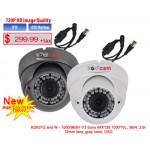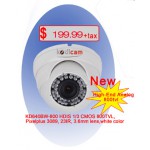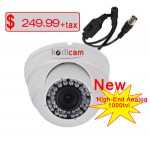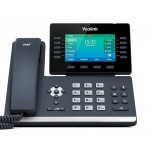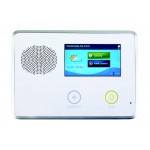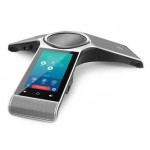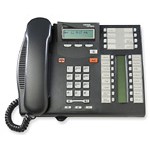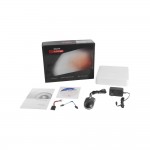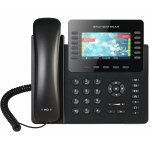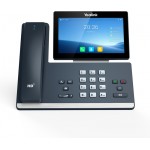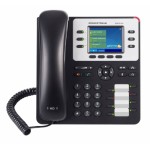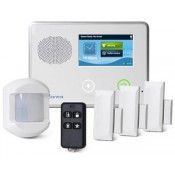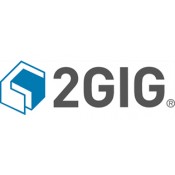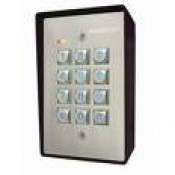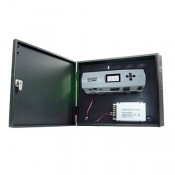The term access control refers to the practice of restricting entrance to a property, a building, or a room to authorized persons. Physical access control can be achieved by a human (a guard, bouncer, or receptionist), through mechanical means such as locks and keys, or through technological means such as access control systems like the mantrap. Within these environments, physical key management may also be employed as a means of further managing and monitoring access to mechanically keyed areas or access to certain small assets.[citation needed]
Physical access control is a matter of who, where, and when. An access control system determines who is allowed to enter or exit, where they are allowed to exit or enter, and when they are allowed to enter or exit. Historically, this was partially accomplished through keys and locks. When a door is locked, only someone with a key can enter through the door, depending on how the lock is configured. Mechanical locks and keys do not allow restriction of the key holder to specific times or dates. Mechanical locks and keys do not provide records of the key used on any specific door, and the keys can be easily copied or transferred to an unauthorized person. When a mechanical key is lost or the key holder is no longer authorized to use the protected area, the locks must be re-keyed.[citation needed]
Electronic access control uses computers to solve the limitations of mechanical locks and keys. A wide range of credentials can be used to replace mechanical keys. The electronic access control system grants access based on the credential presented. When access is granted, the door is unlocked for a predetermined time and the transaction is recorded. When access is refused, the door remains locked and the attempted access is recorded. The system will also monitor the door and alarm if the door is forced open or held open too long after being unlocked.[citation needed]
Access control system operation[edit]
When a credential is presented to a reader, the reader sends the credential’s information, usually a number, to a control panel, a highly reliable processor. The control panel compares the credential's number to an access control list, grants or denies the presented request, and sends a transaction log to a database. When access is denied based on the access control list, the door remains locked. If there is a match between the credential and the access control list, the control panel operates a relay that in turn unlocks the door. The control panel also ignores a door open signal to prevent an alarm. Often the reader provides feedback, such as a flashing red LED for an access denied and a flashing green LED for an access granted.[citation needed]
The above description illustrates a single factor transaction. Credentials can be passed around, thus subverting the access control list. For example, Alice has access rights to the server room, but Bob does not. Alice either gives Bob her credential, or Bob takes it; he now has access to the server room. To prevent this, two-factor authentication can be used. In a two factor transaction, the presented credential and a second factor are needed for access to be granted; another factor can be a PIN, a second credential, operator intervention, or a biometric input.[citation needed]
There are three types (factors) of authenticating information:[2]
· something the user knows, e.g. a password, pass-phrase or PIN
· something the user has, such as smart card or a key fob
· something the user is, such as fingerprint, verified by biometric measurement
Passwords are a common means of verifying a user's identity before access is given to information systems. In addition, a fourth factor of authentication is now recognized: someone you know, whereby another person who knows you can provide a human element of authentication in situations where systems have been set up to allow for such scenarios. For example, a user may have their password, but have forgotten their smart card. In such a scenario, if the user is known to designated cohorts, the cohorts may provide their smart card and password, in combination with the extant factor of the user in question, and thus provide two factors for the user with the missing credential, giving three factors overall to allow access.[citation needed]
Credential[edit]
A credential is a physical/tangible object, a piece of knowledge, or a facet of a person's physical being, that enables an individual access to a given physical facility or computer-based information system. Typically, credentials can be something a person knows (such as a number or PIN), something they have (such as an access badge), something they are (such as a biometric feature) or some combination of these items. This is known as multi-factor authentication. The typical credential is an access card or key-fob, and newer software can also turn users' smartphones into access devices.[3] There are many card technologies including magnetic stripe, bar code, Wiegand, 125 kHz proximity, 26-bit card-swipe, contact smart cards, and contactless smart cards. Also available are key-fobs, which are more compact than ID cards, and attach to a key ring. Biometric technologies include fingerprint, facial recognition, iris recognition, retinal scan, voice, and hand geometry.[4] The built-in biometric technologies found on newer smartphones can also be used as credentials in conjunction with access software running on mobile devices.[5] In addition to older more traditional card access technologies, newer technologies such as Near field communication (NFC) and Bluetooth low energy also have potential to communicate user credentials to readers for system or building access.[6][7]
An access control point, which can be a door, turnstile, parking gate, elevator, or other physical barrier, where granting access can be electronically controlled. Typically, the access point is a door. An electronic access control door can contain several elements. At its most basic, there is a stand-alone electric lock. The lock is unlocked by an operator with a switch. To automate this, operator intervention is replaced by a reader. The reader could be a keypad where a code is entered, it could be a card reader, or it could be a biometric reader. Readers do not usually make an access decision, but send a card number to an access control panel that verifies the number against an access list. To monitor the door position a magnetic door switch can be used. In concept, the door switch is not unlike those on refrigerators or car doors. Generally only entry is controlled, and exit is uncontrolled. In cases where exit is also controlled, a second reader is used on the opposite side of the door. In cases where exit is not controlled, free exit, a device called a request-to-exit (REX) is used. Request-to-exit devices can be a push-button or a motion detector. When the button is pushed, or the motion detector detects motion at the door, the door alarm is temporarily ignored while the door is opened. Exiting a door without having to electrically unlock the door is called mechanical free egress. This is an important safety feature. In cases where the lock must be electrically unlocked on exit, the request-to-exit device also unlocks the door.[citation needed]
Access control decisions are made by comparing the credential to an access control list. This look-up can be done by a host or server, by an access control panel, or by a reader. The development of access control systems has seen a steady push of the look-up out from a central host to the edge of the system, or the reader. The predominant topology circa 2009 is hub and spoke with a control panel as the hub, and the readers as the spokes. The look-up and control functions are by the control panel. The spokes communicate through a serial connection; usually RS-485. Some manufactures are pushing the decision making to the edge by placing a controller at the door. The controllers are IPenabled, and connect to a host and database using standard networks.[citation needed]
Types of readers[edit]
Access control readers may be classified by the functions they are able to perform:[citation needed]
· Basic (non-intelligent) readers: simply read card number or PIN, and forward it to a control panel. In case of biometric identification, such readers output the ID number of a user. Typically, Wiegand protocol is used for transmitting data to the control panel, but other options such as RS-232, RS-485 and Clock/Data are not uncommon. This is the most popular type of access control readers. Examples of such readers are RF Tiny by RFLOGICS, ProxPoint by HID, and P300 by Farpointe Data.
· Semi-intelligent readers: have all inputs and outputs necessary to control door hardware (lock, door contact, exit button), but do not make any access decisions. When a user presents a card or enters a PIN, the reader sends information to the main controller, and waits for its response. If the connection to the main controller is interrupted, such readers stop working, or function in a degraded mode. Usually semi-intelligent readers are connected to a control panel via an RS-485 bus. Examples of such readers are InfoProx Lite IPL200 by CEM Systems, and AP-510 by Apollo.
· Intelligent readers: have all inputs and outputs necessary to control door hardware; they also have memory and processing power necessary to make access decisions independently. Like semi-intelligent readers, they are connected to a control panel via an RS-485 bus. The control panel sends configuration updates, and retrieves events from the readers. Examples of such readers could be InfoProx IPO200 by CEM Systems, and AP-500 by Apollo. There is also a new generation of intelligent readers referred to as "IP readers". Systems with IP readers usually do not have traditional control panels, and readers communicate directly to a PC that acts as a host. Examples of such readers are Foxtech FX-50UX, FX-632 Fingerprint Reader/Controller Access Control System PowerNet IP Reader byIsonas Security Systems,[8] ID 11 by Solus (has a built in webservice to make it user friendly), Edge ER40 reader by HID Global, LogLock and UNiLOCK by ASPiSYS Ltd, BioEntry Plus reader by Suprema Inc., and 4G V-Station by Bioscrypt Inc.
Some readers may have additional features such as an LCD and function buttons for data collection purposes (i.e. clock-in/clock-out events for attendance reports), camera/speaker/microphone for intercom, and smart card read/write support.[citation needed]
Access control readers may also be classified by their type of identification technology.[citation needed]
1. Serial controllers. Controllers are connected to a host PC via a serial RS-485 communication line (or via 20mA current loop in some older systems). External RS-232/485 converters or internal RS-485 cards have to be installed, as standard PCs do not have RS-485 communication ports.[citation needed]
Advantages:[citation needed]
· RS-485 standard allows long cable runs, up to 4000 feet (1200 m)
· Relatively short response time. The maximum number of devices on an RS-485 line is limited to 32, which means that the host can frequently request status updates from each device, and display events almost in real time.
· High reliability and security as the communication line is not shared with any other systems.
Disadvantages:[citation needed]
· RS-485 does not allow Star-type wiring unless splitters are used
· RS-485 is not well suited for transferring large amounts of data (i.e. configuration and users). The highest possible throughput is 115.2 kbit/sec, but in most system it is downgraded to 56.2 kbit/sec, or less, to increase reliability.
· RS-485 does not allow the host PC to communicate with several controllers connected to the same port simultaneously. Therefore in large systems, transfers of configuration, and users to controllers may take a very long time, interfering with normal operations.
· Controllers cannot initiate communication in case of an alarm. The host PC acts as a master on the RS-485 communication line, and controllers have to wait until they are polled.
· Special serial switches are required, in order to build a redundant host PC setup.
· Separate RS-485 lines have to be installed, instead of using an already existing network infrastructure.
· Cable that meets RS-485 standards is significantly more expensive than regular Category 5 UTP network cable.
· Operation of the system is highly dependent on the host PC. In the case that the host PC fails, events from controllers are not retrieved, and functions that require interaction between controllers (i.e. anti-passback) stop working.
2. Serial main and sub-controllers. All door hardware is connected to sub-controllers (a.k.a. door controllers or door interfaces). Sub-controllers usually do not make access decisions, and instead forward all requests to the main controllers. Main controllers usually support from 16 to 32 sub-controllers.
Advantages:[citation needed]
· Work load on the host PC is significantly reduced, because it only needs to communicate with a few main controllers.
· The overall cost of the system is lower, as sub-controllers are usually simple and inexpensive devices.
· All other advantages listed in the first paragraph apply.
Disadvantages:[citation needed]
· Operation of the system is highly dependent on main controllers. In case one of the main controllers fails, events from its sub-controllers are not retrieved, and functions that require interaction between sub-controllers (i.e. anti-passback) stop working.
· Some models of sub-controllers (usually lower cost) have not the memory or processing power to make access decisions independently. If the main controller fails, sub-controllers change to degraded mode in which doors are either completely locked or unlocked, and no events are recorded. Such sub-controllers should be avoided, or used only in areas that do not require high security.
· Main controllers tend to be expensive, therefore such a topology is not very well suited for systems with multiple remote locations that have only a few doors.
· All other RS-485-related disadvantages listed in the first paragraph apply.
3. Serial main controllers & intelligent readers. All door hardware is connected directly to intelligent or semi-intelligent readers. Readers usually do not make access decisions, and forward all requests to the main controller. Only if the connection to the main controller is unavailable, will the readers use their internal database to make access decisions and record events. Semi-intelligent reader that have no database and cannot function without the main controller should be used only in areas that do not require high security. Main controllers usually support from 16 to 64 readers. All advantages and disadvantages are the same as the ones listed in the second paragraph.
4. Serial controllers with terminal servers. In spite of the rapid development and increasing use of computer networks, access control manufacturers remained conservative, and did not rush to introduce network-enabled products. When pressed for solutions with network connectivity, many chose the option requiring less efforts: addition of a terminal server, a device that converts serial data for transmission via LAN or WAN.
Advantages:[citation needed]
· Allows utilizing the existing network infrastructure for connecting separate segments of the system.
· Provides a convenient solution in cases when the installation of an RS-485 line would be difficult or impossible.
Disadvantages:[citation needed]
· Increases complexity of the system.
· Creates additional work for installers: usually terminal servers have to be configured independently, and not through the interface of the access control software.
· Serial communication link between the controller and the terminal server acts as a bottleneck: even though the data between the host PC and the terminal server travels at the 10/100/1000Mbit/sec network speed, it must slow down to the serial speed of 112.5 kbit/sec or less. There are also additional delays introduced in the process of conversion between serial and network data.
5. Network-enabled main controllers. The topology is nearly the same as described in the second and third paragraphs. The same advantages and disadvantages apply, but the on-board network interface offers a couple of valuable improvements. Transmission of configuration and user data to the main controllers is faster, and may be done in parallel. This makes the system more responsive, and does not interrupt normal operations. No special hardware is required in order to achieve redundant host PC setup: in the case that the primary host PC fails, the secondary host PC may start polling network controllers. The disadvantages introduced by terminal servers (listed in the fourth paragraph) are also eliminated.
6. IP controllers. Controllers are connected to a host PC via Ethernet LAN or WAN.
Advantages:[citation needed]
· An existing network infrastructure is fully utilized, and there is no need to install new communication lines.
· There are no limitations regarding the number of controllers (as the 32 per line in cases of RS-485).
· Special RS-485 installation, termination, grounding and troubleshooting knowledge is not required.
· Communication with the controllers may be done at the full network speed, which is important if transferring a lot of data (databases with thousands of users, possibly including biometric records).
· In case of an alarm, controllers may initiate connection to the host PC. This ability is important in large systems, because it serves to reduce network traffic caused by unnecessary polling.
· Simplifies installation of systems consisting of multiple sites that are separated by large distances. A basic Internet link is sufficient to establish connections to the remote locations.
· Wide selection of standard network equipment is available to provide connectivity in various situations (fiber, wireless, VPN, dual path, PoE)
Disadvantages:[citation needed]
· The system becomes susceptible to network related problems, such as delays in case of heavy traffic and network equipment failures.
· Access controllers and workstations may become accessible to hackers if the network of the organization is not well protected. This threat may be eliminated by physically separating the access control network from the network of the organization. Also it should be noted that most IP controllers utilize either Linux platform or proprietary operating systems, which makes them more difficult to hack. Industry standard data encryption is also used.
· Maximum distance from a hub or a switch to the controller (if using a copper cable) is 100 meters (330 ft).
· Operation of the system is dependent on the host PC. In case the host PC fails, events from controllers are not retrieved and functions that require interaction between controllers (i.e. anti-passback) stop working. Some controllers, however, have a peer-to-peer communication option in order to reduce dependency on the host PC.
7. IP readers. Readers are connected to a host PC via Ethernet LAN or WAN.
Advantages:[citation needed]
· Most IP readers are PoE capable. This feature makes it very easy to provide battery backed power to the entire system, including the locks and various types of detectors (if used).
· IP readers eliminate the need for controller enclosures.
· There is no wasted capacity when using IP readers (e.g. a 4-door controller would have 25% of unused capacity if it was controlling only 3 doors).
· IP reader systems scale easily: there is no need to install new main or sub-controllers.
· Failure of one IP reader does not affect any other readers in the system.
Disadvantages:[citation needed]
· In order to be used in high-security areas, IP readers require special input/output modules to eliminate the possibility of intrusion by accessing lock and/or exit button wiring. Not all IP reader manufacturers have such modules available.
· Being more sophisticated than basic readers, IP readers are also more expensive and sensitive, therefore they should not be installed outdoors in areas with harsh weather conditions, or high probability of vandalism, unless specifically designed for exterior installation. A few manufacturers make such models.
The advantages and disadvantages of IP controllers apply to the IP readers as well.
Security risks[edit]
The most common security risk of intrusion through an access control system is by simply following a legitimate user through a door, and this is referred to as "tailgating". Often the legitimate user will hold the door for the intruder. This risk can be minimized through security awareness training of the user population, or more active means such as turnstiles. In very high security applications this risk is minimized by using a sally port, sometimes called a security vestibule or mantrap, where operator intervention is required presumably to assure valid identification.[citation needed]
The second most common risk is from levering a door open. This is surprisingly simple and effective on most doors. The lever could be as small as a screwdriver or big as a crow bar. Fully implemented access control systems include forced door monitoring alarms. These vary in effectiveness, usually failing from high false positive alarms, poor database configuration, or lack of active intrusion monitoring.[citation needed]
Similar to levering is crashing through cheap partition walls. In shared tenant spaces the divisional wall is a vulnerability. A vulnerability along the same lines is the breaking of sidelights.[citation needed]
Spoofing locking hardware is fairly simple and more elegant than levering. A strong magnet can operate the solenoid controlling bolts in electric locking hardware. Motor locks, more prevalent in Europe than in the US, are also susceptible to this attack using a doughnut shaped magnet. It is also possible to manipulate the power to the lock either by removing or adding current.[citation needed]
Access cards themselves have proven vulnerable to sophisticated attacks. Enterprising hackers have built portable readers that capture the card number from a user’s proximity card. The hacker simply walks by the user, reads the card, and then presents the number to a reader securing the door. This is possible because card numbers are sent in the clear, no encryption being used.[citation needed]
Finally, most electric locking hardware still have mechanical keys as a fail-over. Mechanical key locks are vulnerable to bumping.[citation needed]
The need-to-know principle[edit]
The need to know principle can be enforced with user access controls and authorization procedures and its objective is to ensure that only authorized individuals gain access to information or systems necessary to undertake their duties.

